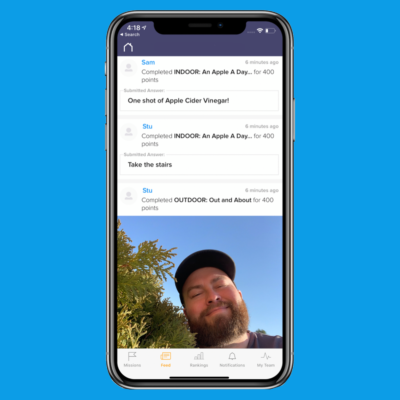When we feel connected to one another, we get more done: that is basic human behavior. But in this day and age, connecting with co-workers can be difficult to do in person, leaving the online route as the only path forward. But just because you can’t be together physically doesn’t mean your employees, peers, or fellow office dwellers can’t have that same sense of camaraderie and connection.
First and foremost, understand that the desire to connect with others is a fundamental human experience. That interaction is what makes our species unique, and has led to not only our survival, but the fact that the human race has thrived. But to make that connection, we need more than just words on a screen or even a voice on the phone; we need a visual component.
With that said, while it’s easy to just switch to video conference calls and call it a day, the reality is that it isn’t going to create a sense of connection or community. Just like simply being in the same office doesn’t create that atmosphere of community, having an online platform alone doesn’t get the desired end results. The HR team must work to create a time and place for connections, just as they do when everyone is commuting into the office.
For those looking for better, more solid connections that will lead to happier, more productive teams, here are a few things to try:
1. Make introductions
 Sure, you might be able to see everyone on the screen in tiny video chat windows, but take the time to really get to know who everyone is, especially if it’s a larger group, or a group that doesn’t work together often. Take the time to individually introduce each person, give their qualifications, and have them say a little about themselves. This creates a sense of team, and gets everyone thinking as an “us” rather than a “them.”
Sure, you might be able to see everyone on the screen in tiny video chat windows, but take the time to really get to know who everyone is, especially if it’s a larger group, or a group that doesn’t work together often. Take the time to individually introduce each person, give their qualifications, and have them say a little about themselves. This creates a sense of team, and gets everyone thinking as an “us” rather than a “them.”
2. Use breakout rooms
Platforms like Zoom now offer the ability to have breakout rooms from larger events, where a few people can connect and talk more in-depth — use them. Don’t just have a general meeting where only a few top-tier executives speak. Instead, let them do introductions, but then allow team leaders to connect with their staff, or use another structure that allows smaller groups to come together where people are more comfortable asking questions and engaging with their peers.
3. Enable chat
 After the “new” wore off and everyone got used to video conferencing, one of the first things everyone learned was where the “mute” button was. And while that’s fine when a presentation is ongoing, instead of having long meetings where everyone is expected to just sit and listen, create opportunities for everyone to contribute. Encourage interaction — even if it’s just before or after the official presentation. Make a comfortable atmosphere for casual conversation.
After the “new” wore off and everyone got used to video conferencing, one of the first things everyone learned was where the “mute” button was. And while that’s fine when a presentation is ongoing, instead of having long meetings where everyone is expected to just sit and listen, create opportunities for everyone to contribute. Encourage interaction — even if it’s just before or after the official presentation. Make a comfortable atmosphere for casual conversation.
4. Keep the video on
Like the mute button, everyone has also learned how to turn the webcam off. And again, while that might be ideal for a presentation, encourage teams to have meetings where everyone is visible. This encourages engagement and participation, rather than just logging in and walking away.
Beyond the Meeting
Meetings are a necessity, but they aren’t — and shouldn’t be — the only interaction a team has on a weekly or monthly basis. Creating opportunities for connection and communication means having a reason to connect that doesn’t revolve around reports, deadlines, or the day-to-day running of a business.
With that in mind, first, don’t forget to distinguish between introverts and extroverts. Don’t just create events with mandatory participation and expect everyone to be on board — just as you wouldn’t expect every employee to show up for a happy hour. Try to find a balance of group sizes and activities that will appeal to everyone, even if every interaction isn’t their favorite. A few options to consider:
- Online classes. Things like yoga, or workouts, or baking classes, or wine tastings — there are a lot of different types of activities where employees can engage with each other, learn something new, and can have a shared experience.
- Random meeting rooms. Have a space where employees are encouraged to “drop by” and have casual conversation that is always open. Think of it as a modern-day water cooler.
- Friday afternoon games. Have the entire team join in for poker, or blackjack, or any number of hosted game events where employees can relax, have a little fun, and connect with each other on a personal level that has nothing to do with the day-to-day job.
Creating opportunities for staff to connect in casual, more laid-back settings encourages open communication, which in turn leads to happier, healthier, more productive teams. But that doesn’t mean you have to re-invent the proverbial wheel — TeamBonding can help you create these opportunities, while freeing you up to handle everything else.













